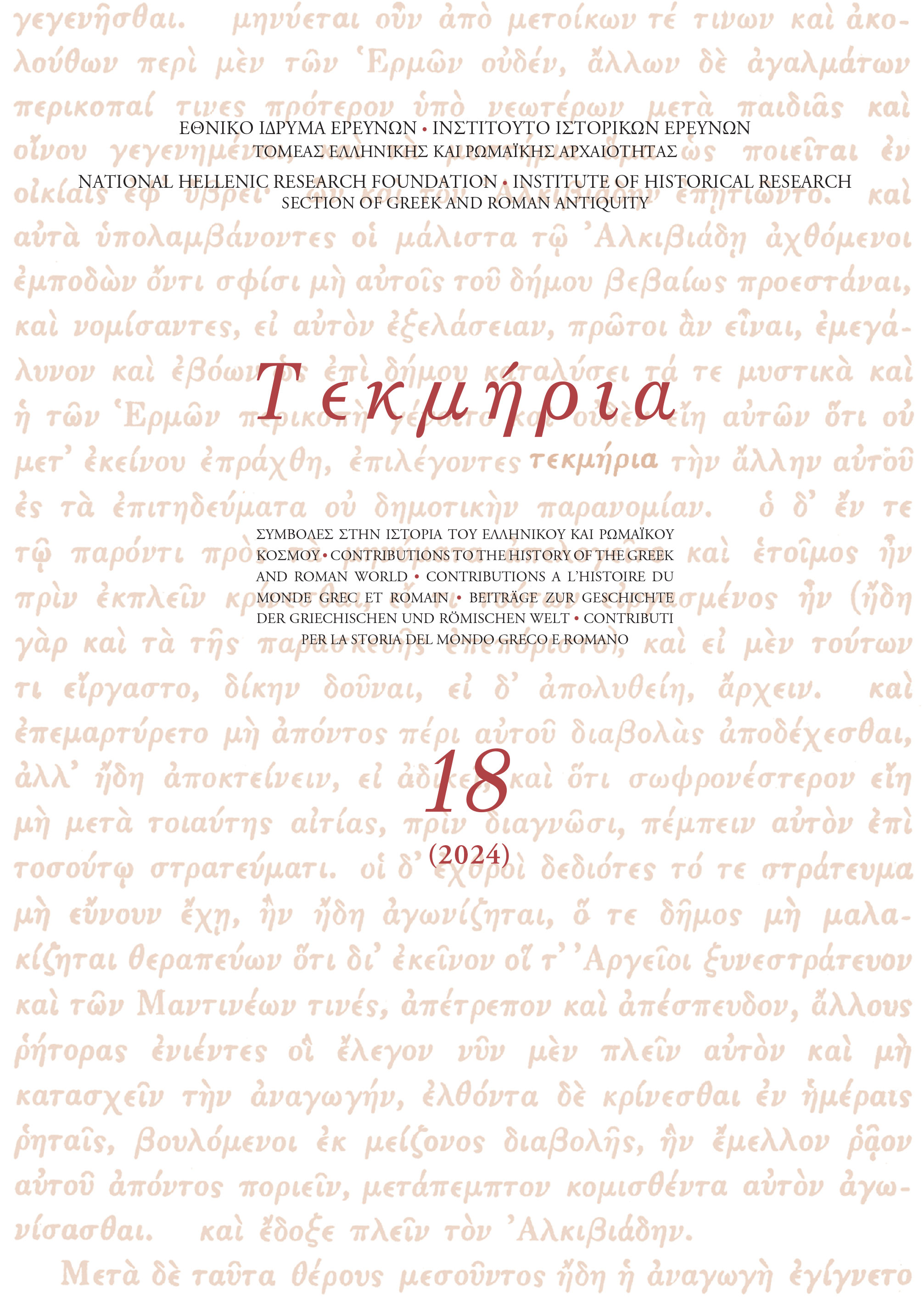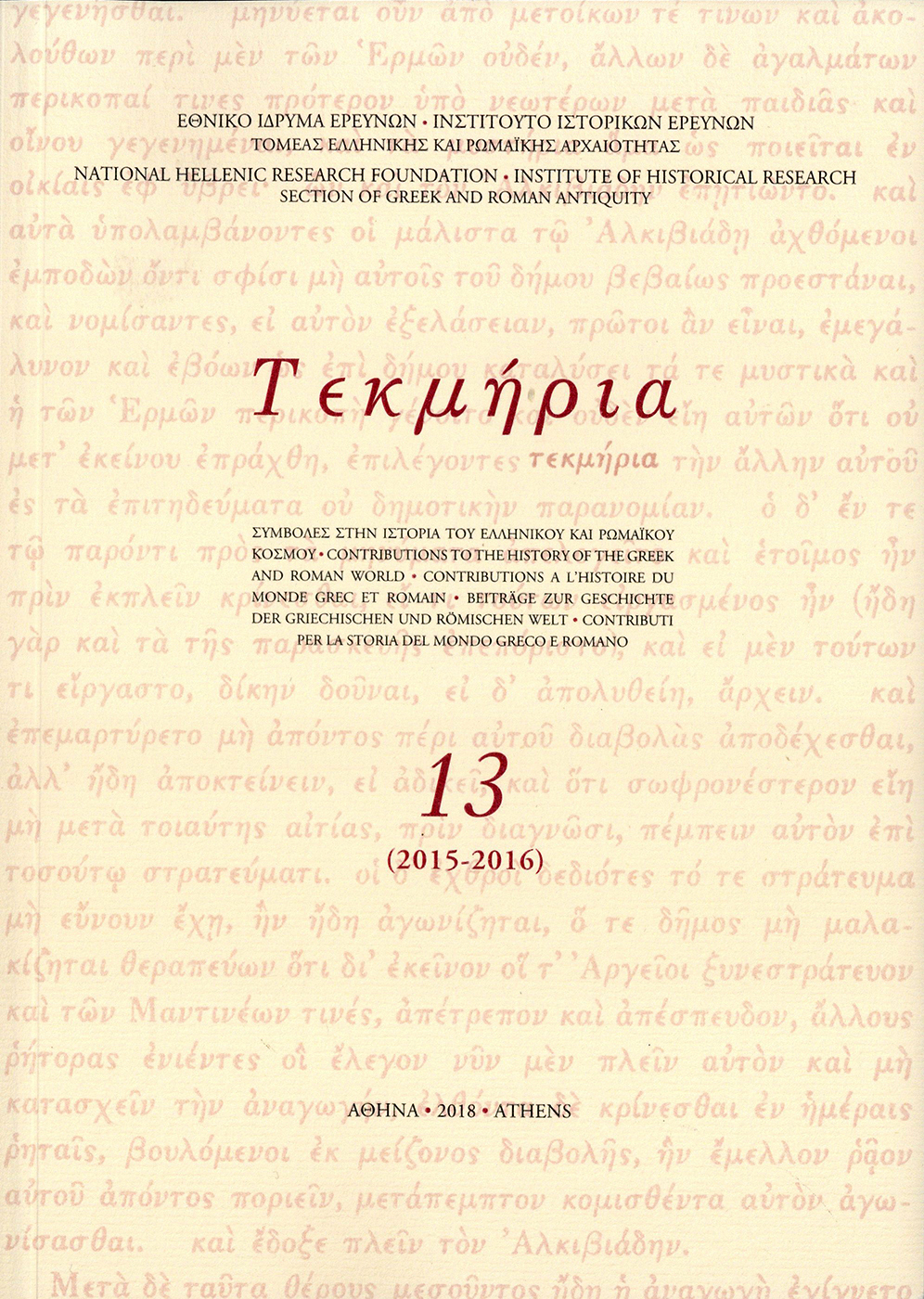The “Tomb of the Philosophers” in Pella, Macedonia Revisited: New Findings on Its Iconography

Abstract
This article discusses the new findings on the iconography of the two figural friezes painted in the interior of the “Tomb of the Philosophers”, an early Hellenistic, monumental, built cist grave, situated in the east cemetery of Pella, Macedonia. A new technical investigation of the tomb’s wall paintings has allowed the revision of older readings of the two friezes. In the lower, main figural frieze new observations pertain to figure characterization, through features, dress and attributes, as well as to the scene’s setting. The figures of the frieze offer the earliest preserved gathering of intellectuals whose professional insignia cannot be missed, while the celestial globe shown on the west wall appears to be one of the earliest extant representations of the device and the earliest preserved in a funerary environment. The new identification proposed for the monuments shown in the upper, secondary frieze, which represents a horse race, aligns the frieze’s composition with established iconographic schemes of agonistic events, adds multiple levels of symbolism, and ties the Pella wall-paintings more tightly than previously believed with the “Torre Annunziata philosopher mosaic”, Pompeii, and its twin from Sarsina, Umbria. The bonds of astronomy/cosmology with political theory and with aspects of Macedonian royal ideology, in particular, are set in relief. Finally, it is argued that the physical vicinity of the “Tomb of the Philosophers” with the palace of Pella and the royal court informed the mode of burial of a man of thought with favourable relations to his times’ monarchy, as well as his mode of portrayal as “the astronomer” on the west wall, a figure that presents us with a Macedonian iconographic hybrid of a philosopher, resonating the Platonic concept of the “philosopher king”.
Article Details
- How to Cite
-
Kalaitzi, M., Brecoulaki, H., & Verri, G. (2024). The “Tomb of the Philosophers” in Pella, Macedonia Revisited: New Findings on Its Iconography. Tekmeria, 18, 97–150. https://doi.org/10.12681/tekmeria.36631
- Issue
- Vol. 18 (2024)
- Section
- Articles

This work is licensed under a Creative Commons Attribution-NonCommercial-ShareAlike 4.0 International License.
Copyright
The copyright for articles in this journal is retained by the author(s), with first publication rights granted to the journal. Authors who submit articles to this journal confirm that third-party intellectual property rights are not violated in any way. By virtue of their appearance in this open access journal, articles can be used freely, with proper attribution, for educational and other non-commercial purposes. The National Hellenic Research Foundation retains the right to publish papers that appear in ΤΕΚΜΗΡΙΑ in any form, including electronic, the journal may assume in the future. It also retains the right to deposit articles published in ΤΕΚΜΗΡΙΑ in its institutional repository.
Sample attribution: Author, article title, first published in ΤΕΚΜΗΡΙΑ, Vol. No., Year, Pages.



